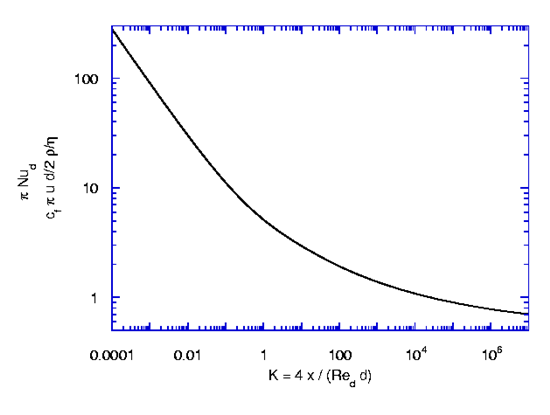The following options for drag coefficients are available in the fiber model to compute the drag due to flow moving parallel to the fibers:
- const-drag
A constant value for the drag can be specified.
- kase-matsuo
A drag coefficient using the model taken from Kase and Matsuo [291], see Equation 22–29.
- gampert
A drag coefficient using the model from Gampert [195].
Gampert provided analytical and numerical solutions for laminar axisymmetric flow of a moving cylinder in stationary air including strong curvature effects in the boundary layer, [195]. The drag coefficient and the Nusselt number are shown as dimensionless groups in Figure 22.2: Dimensionless Groups of Drag Coefficient and Nusselt Number.
Note that the curvature
is defined as the abscissa in Figure 22.2: Dimensionless Groups of Drag Coefficient and Nusselt Number. This correlation is recommended in laminar flows.
- user-defined
A drag coefficient that you specify in a user-defined function (UDF). See User-Defined Functions (UDFs) for the Continuous Fiber Model for more information on using UDFs in the fiber model.
(22–29) |
In Figure 22.2: Dimensionless Groups of Drag Coefficient and Nusselt
Number and Equation 22–29, the Reynolds number is computed based
on the relative velocity of the surrounding flow parallel to the fibers
.
Lateral drag due to flow of the surrounding fluid perpendicular to the fibers is computed by a correlation from Schlichting [579]
(22–30) |
In Equation 22–30 the Reynolds number is
computed based on the relative velocity of the surrounding flow perpendicular to the
fibers .



